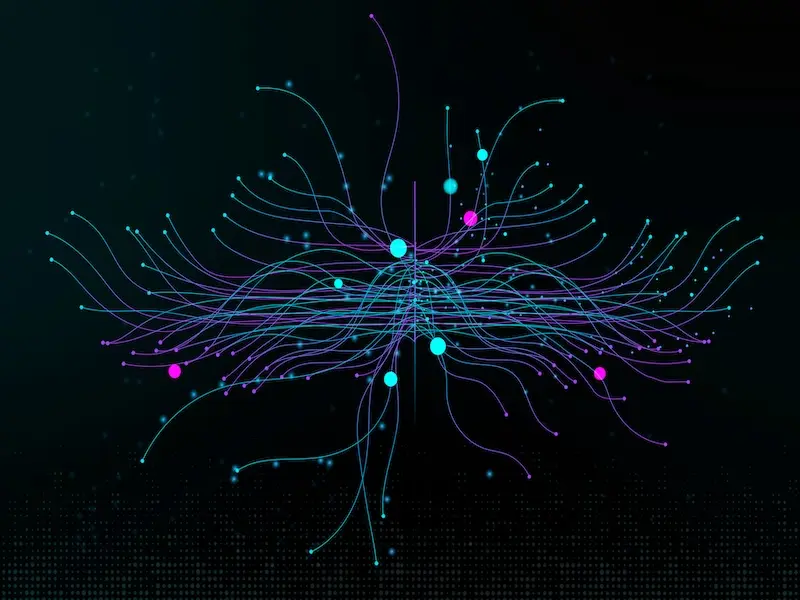- Artificial Neural Networks (ANNs) are the foundational building blocks of many AI systems.
- Deep learning specifically refers to ANNs with multiple layers, capable of learning complex patterns.
Understanding artificial neural networks (ANNs)
Artificial Neural Networks (ANNs) are computing systems modelled after the way biological brains work. They consist of nodes, often referred to as neurons, that are interconnected to form a network. These networks process data and learn to recognise patterns through training, much like the human brain. The basic structure of an ANN includes an input layer, one or more hidden layers, and an output layer.
ANNs are widely used across various fields such as image recognition, language processing, and more. They have the ability to learn from data, make predictions, and improve over time, making them a core component of machine learning. However, the term “deep learning” is often used when these networks become more complex.
When does an ANN become deep learning?
The distinction between an ordinary ANN and deep learning lies in the depth of the network:
Shallow neural networks: A shallow neural network typically has only one or two hidden layers between the input and output layers. These networks can handle simple tasks but struggle with more complex data that require hierarchical feature extraction.
Deep neural networks: A deep neural network, which is the basis of deep learning, has multiple hidden layers (often more than three). The depth allows the network to learn and model more complex and abstract features from the data. This is particularly useful in tasks such as image and speech recognition, where the layers of the network can progressively extract more detailed features.
Deep learning models, due to their depth, require large amounts of data and computational power. They are designed to solve problems that were previously out of reach for simpler machine learning models. The deeper the network, the more powerful it becomes in capturing and interpreting complex patterns.
Also read: What is an artificial neural network in deep learning?
Also read: What is computer vision in deep learning?
Applications and importance of deep learning
Deep learning has revolutionised fields like computer vision, natural language processing, and autonomous driving. Here’s why deep learning stands out:
Feature learning: Unlike traditional machine learning, where features need to be manually engineered, deep learning models can automatically learn the features from raw data. This ability to learn hierarchical features makes deep learning highly effective in tasks like image classification and object detection.
Handling large and complex datasets: Deep learning thrives on big data. The more data available, the better a deep neural network can perform. This makes deep learning particularly useful in industries with large datasets, such as healthcare, finance, and entertainment.
Generalisation and transfer learning: Deep learning models can generalise well to new, unseen data. Moreover, through transfer learning, a model trained on one task can be adapted to perform another related task with much less data, reducing the need for extensive retraining.
Artificial Neural Networks are the backbone of many AI systems, but they only become part of deep learning when they have multiple layers that enable them to model complex patterns and data hierarchies. While all deep learning models are built on ANNs, not all ANNs are considered deep learning models. The key difference lies in the network’s depth and its ability to handle more complex tasks.

